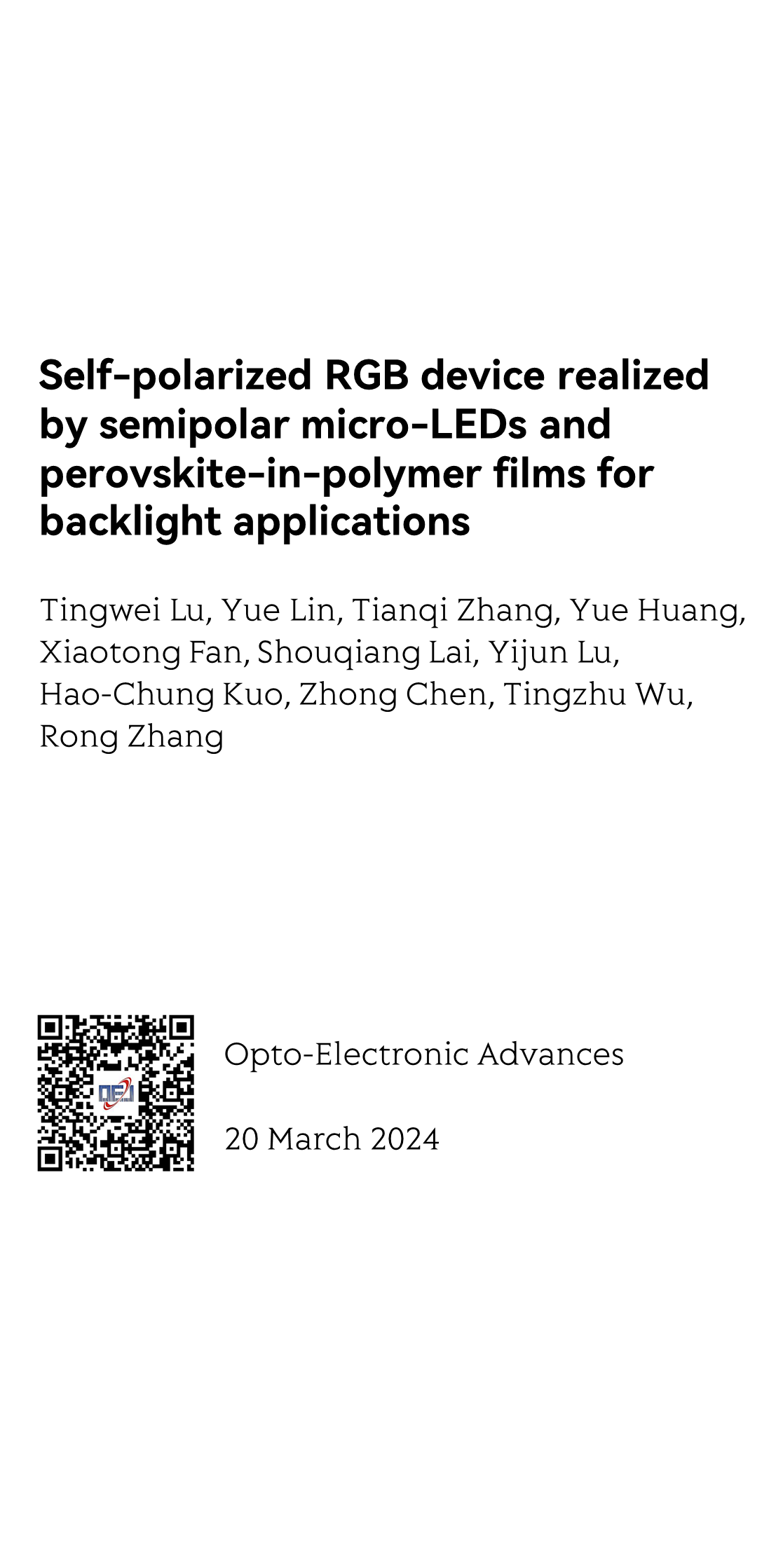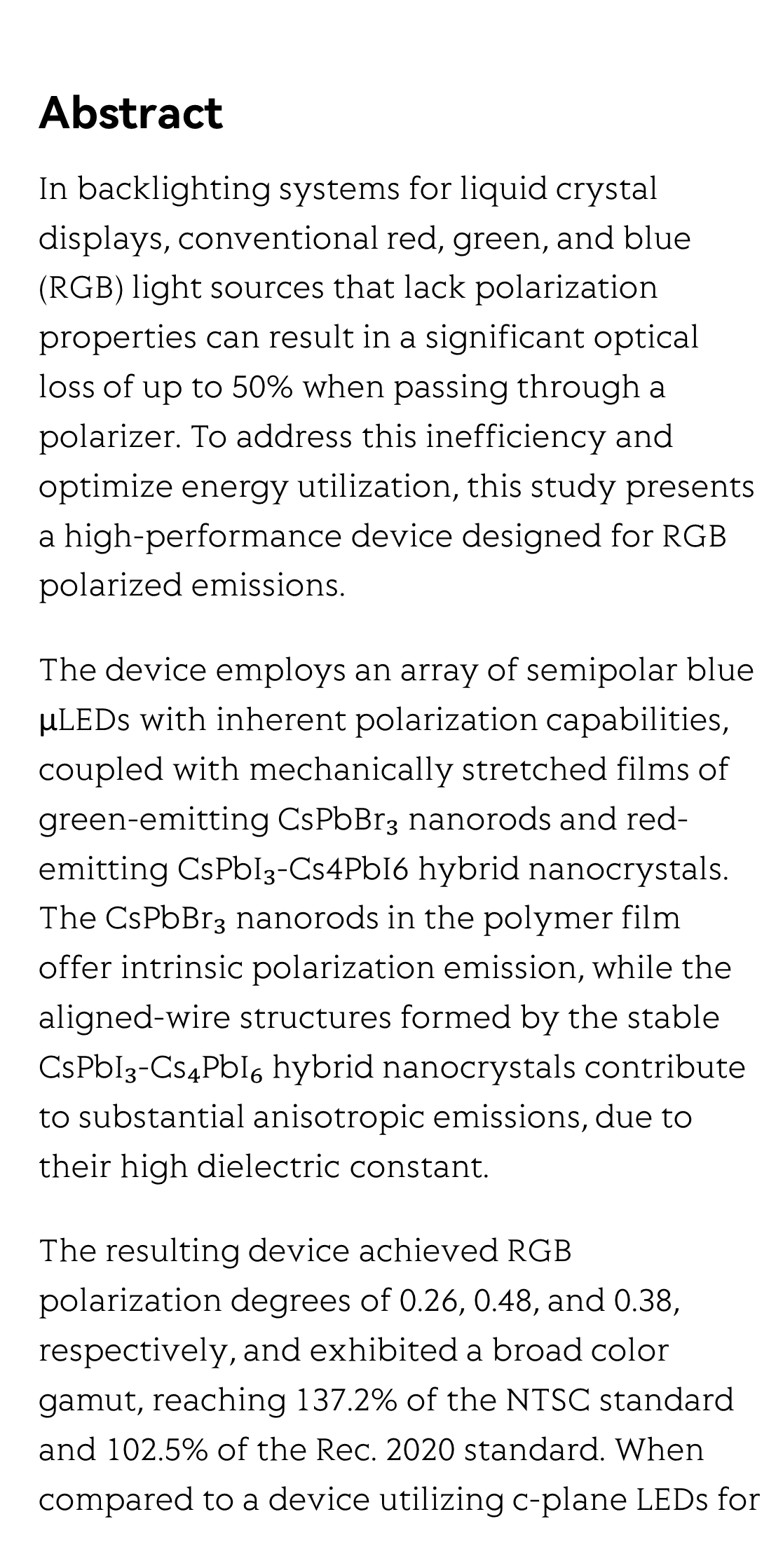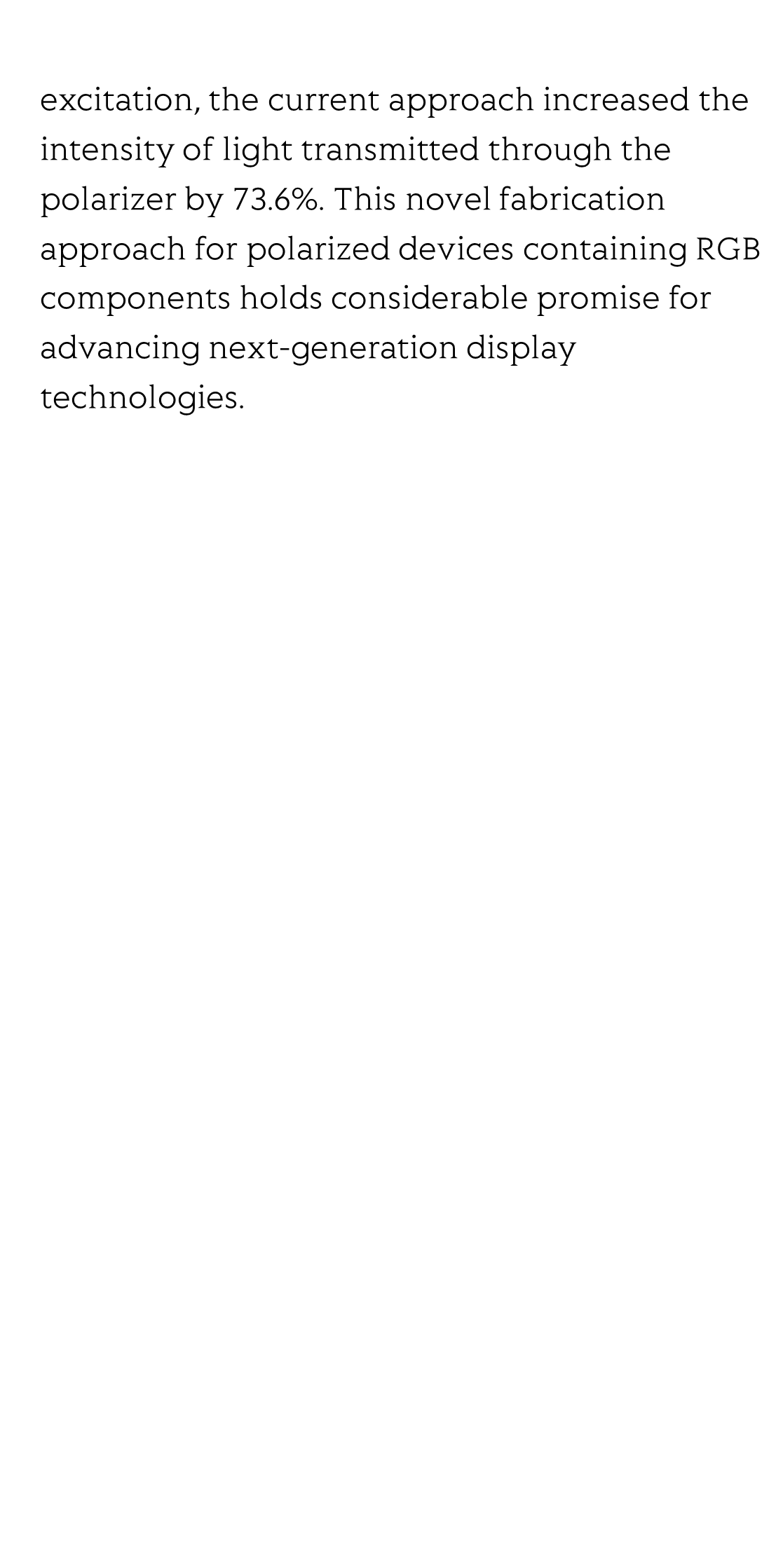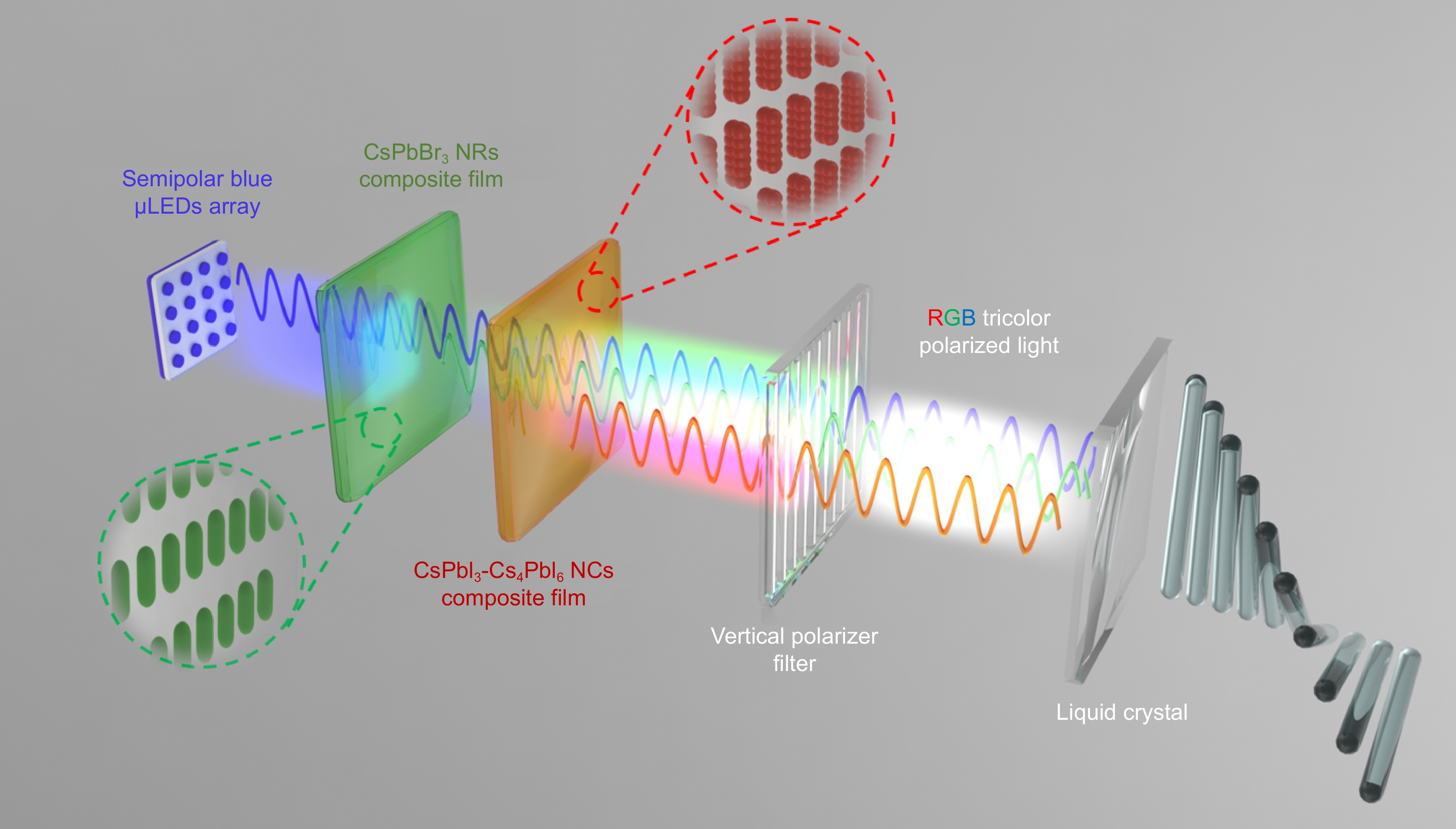(Peer-Reviewed) Self-polarized RGB device realized by semipolar micro-LEDs and perovskite-in-polymer films for backlight applications
Tingwei Lu 卢霆威 ¹, Yue Lin 林岳 ¹ ², Tianqi Zhang 张添齐 ¹, Yue Huang 黄岳 ¹, Xiaotong Fan 范小通 ¹, Shouqiang Lai 赖寿强 ¹, Yijun Lu 吕毅军 ¹ ², Hao-Chung Kuo 郭浩中 ³ ⁴, Zhong Chen 陈忠 ¹ ², Tingzhu Wu 吴挺竹 ¹ ², Rong Zhang 张荣 ¹ ²
¹ School of Electronic Science and Engineering, Fujian Engineering Research Center for Solid-State Lighting, Xiamen University, Xiamen 361005, China
中国 厦门 厦门大学电子科学与技术学院 福建省固态照明工程研究中心
² Innovation Laboratory for Sciences and Technologies of Energy Materials of Fujian Province (IKKEM), Xiamen 361005, China
中国 厦门 嘉庚创新实验室(福建能源材料科学与技术创新实验室)
³ Department of Photonics and Graduate Institute of Electro-Optical Engineering, College of Electrical and Computer Engineering, Yang Ming Chiao Tung University, Hsinchu 30010, China
中国 新竹 台湾阳明交通大学 电机学院 光子学系 光电工程研究所
⁴ Semiconductor Research Center, Hon Hai Research Institute, Taipei 11492, China
中国 台北 鸿海研究院半导体研究中心
Opto-Electronic Advances, 2024-03-20
Abstract
In backlighting systems for liquid crystal displays, conventional red, green, and blue (RGB) light sources that lack polarization properties can result in a significant optical loss of up to 50% when passing through a polarizer. To address this inefficiency and optimize energy utilization, this study presents a high-performance device designed for RGB polarized emissions.
The device employs an array of semipolar blue µLEDs with inherent polarization capabilities, coupled with mechanically stretched films of green-emitting CsPbBr₃ nanorods and red-emitting CsPbI₃-Cs4PbI6 hybrid nanocrystals. The CsPbBr₃ nanorods in the polymer film offer intrinsic polarization emission, while the aligned-wire structures formed by the stable CsPbI₃-Cs₄PbI₆ hybrid nanocrystals contribute to substantial anisotropic emissions, due to their high dielectric constant.
The resulting device achieved RGB polarization degrees of 0.26, 0.48, and 0.38, respectively, and exhibited a broad color gamut, reaching 137.2% of the NTSC standard and 102.5% of the Rec. 2020 standard. When compared to a device utilizing c-plane LEDs for excitation, the current approach increased the intensity of light transmitted through the polarizer by 73.6%. This novel fabrication approach for polarized devices containing RGB components holds considerable promise for advancing next-generation display technologies.
Flicker minimization in power-saving displays enabled by measurement of difference in flexoelectric coefficients and displacement-current in positive dielectric anisotropy liquid crystals
Junho Jung, HaYoung Jung, GyuRi Choi, HanByeol Park, Sun-Mi Park, Ki-Sun Kwon, Heui-Seok Jin, Dong-Jin Lee, Hoon Jeong, JeongKi Park, Byeong Koo Kim, Seung Hee Lee, MinSu Kim
Opto-Electronic Advances
2025-09-25
Dual-frequency angular-multiplexed fringe projection profilometry with deep learning: breaking hardware limits for ultra-high-speed 3D imaging
Wenwu Chen, Yifan Liu, Shijie Feng, Wei Yin, Jiaming Qian, Yixuan Li, Hang Zhang, Maciej Trusiak, Malgorzata Kujawinska, Qian Chen, Chao Zuo
Opto-Electronic Advances
2025-09-25







